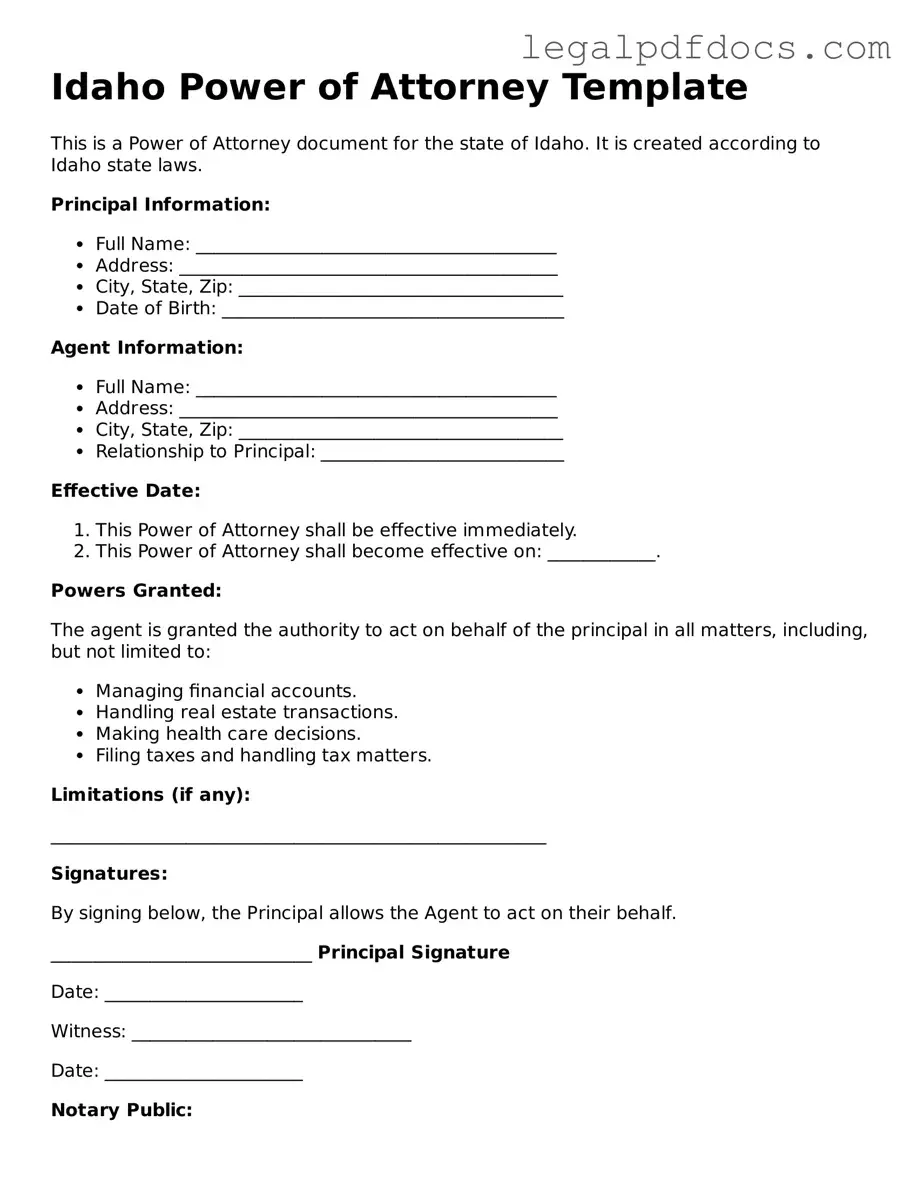In Idaho, the Power of Attorney (POA) form serves as a crucial legal document that empowers an individual, known as the principal, to designate another person, referred to as the agent or attorney-in-fact, to make decisions on their behalf. This form can be tailored to fit various needs, whether for financial matters, healthcare decisions, or specific transactions. Importantly, the Idaho POA can be either durable, remaining effective even if the principal becomes incapacitated, or non-durable, which ceases upon the principal's incapacity. The form requires clear identification of both the principal and the agent, as well as a detailed description of the powers granted. Additionally, it must be signed and dated by the principal, often requiring witnesses or notarization to ensure its validity. Understanding the nuances of this form is essential for anyone considering granting authority to another person, as it outlines the scope of power and the responsibilities involved, ultimately safeguarding the principal’s interests while providing peace of mind in times of need.
